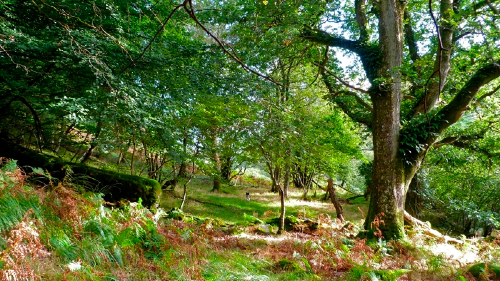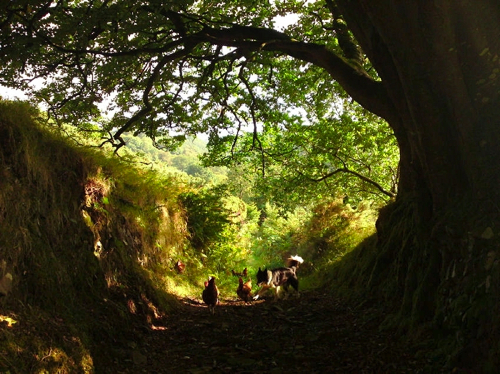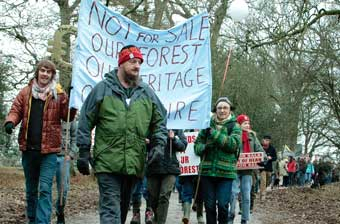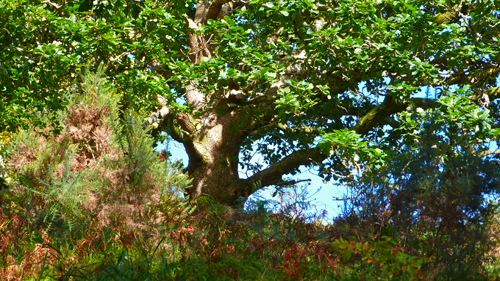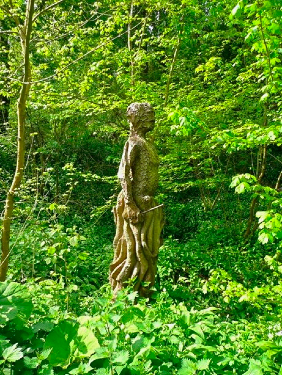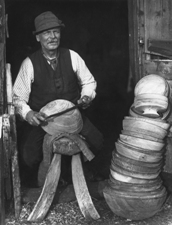Ingrid asked some great questions in her article about an “Artist’s perspective on our forests” so we’ve looked into it a bit further.
There is a simple formula to the government’s plans to sell off England’s Public Forestry Estate: whatever they go for, it will be at the “open market value”.
At the “open market value” DEFRA Minister James Paice expects to make £100m for 15% of the 258,000 hectares of Forestry Commission woodland. (Here’s the Govt PDF briefing paper.) That’s before the ‘consultation’ closes. That all adds up to the government’s economic valuation of the Public Forestry Estate (PFE) at £700million.[1]
But let’s focus on what that “open market value” measures. An “open market value” based on what can be ‘marketized’ (namely, the timber) grossly undervalues England’s forests and the public benefits they support.
Missing the non-market values
That’s because it misses out the most significant value of our forests: the non-market values. These are, according to a 2008 IUCN report, benefits such as “recreation, landscape amenity, pollution absorption, water supply quantity and quality, and protection of natural heritage.” (full report here: IUCN PDF)
These non-market values are public goods, ‘owned’ by everyone; not just timber companies, and not the government’s to sell off.
Usually, they lack markets to govern their trade or establish their worth. In fact, you probably know their worth much better than any economist. You’re creating the value: an estimated 252 million leisure days are taken as trips made to forest and woodlands each year: that’s a huge 20% of all leisure day trips in the countryside.[2]
You can’t put a price on that. The Save Our Forests campaign and everyone who has signed the 38 Degrees petition recognises that.
Can you sell the woods, the sky?
But putting a price on such things can have benefits. As Pearce (2001) says, setting an economic value on biodiversity such as forests is a step towards their conservation: “the pressures to reduce biodiversity are so large that the chances that we will introduce incentives [for their protection] without demonstrating the economic value are much less than if we do engage in valuation.”[3]
In fact, when it comes to putting a price on the non-market values of England’s PFE, it shows just how wrong the government is to sell them.
Take a look at these figures that value the social and environmental benefits of our PFE:
Table 6 – The environmental values of UK Forestry (£ Million 2003 prices)
| Environmental Benefit | Annual Value | Capitalized Value |
| Recreation | 392.65 | 11,218 |
| Landscape | 150.22 | 4,292 |
| Biodiversity | 386.00 | 11,029 |
| Carbon Sequestration | 93.66 | 2,676 |
| Air Pollution absorption | 0.39 | 11 |
| Total: | 1,022.92 (that’s over 1 billion) | 29,226 |
Source: Willis et al. (2003)[4]
These figures use conservative estimates for costs and values. They are relevant and clear—but missing in the government’s “open market value”. What they show is that an outlay of around £15million each year (or 30p per person – here’s that PDF) to protect the PFE and their public goods:
ensures delivery of social benefits worth £1 billion a year and the protection of a national asset worth £29 billion. Effectively protecting the UK’s woodland is clearly a highly profitable investment.
Social benefits of £1billion a year—not counting the timber value. A national (that’s ours!) asset of £29billion. And yet the government wants to ‘dispose’ of them for £700million. Gone.
The authors of those figures argue: “Under-valuation of any of these social and economic benefits will impede the efficient allocation of resources to achieve sustainable forest management.”[5]
Or, if you sell our forests at your “open market price” then you’re selling our public goods for nothing.
A better argument for keeping England’s forests public?
And if they are sold to private bodies, then the new owners probably won’t have the resources to measure or maintain the public benefits of which they’ve just taken possession. The IUCN report makes this very clear:
Their lack of marketability also means the public benefits cannot be captured by private forest managers/owners – a fact that must be recognised if the UK woodlands are to be managed appropriately.
Is this another example of the Coalition presenting us with a poorly conceived government policy? We’d better hope note. Because according to the IUCN report, “poorly conceived government policies” are one of the nine direct reasons for biodiversity loss.
And when it’s lost, it’s often impossible to bring back.
What can I do?
If you are a policy-maker or policy-informer, download the documents referenced here to make sure the UK’s indicators of biodiversity expenditure and the social and environmental long-term benefits are taken into account in any government decision on the Public Bodies Bill and the PFE Sale Consultation.
If you are a member of the public you can ask your MP, your local councillors, your House of Lords representative, and the social and environmental charities you’re a member of, to take these non-market values into account when debating the Public Bodies Bill (sections 17, 18, and 19) and the Forestry Commission consultation document.
[1] http://www.theyworkforyou.com/debate/?id=2010-11-04a.1028.3
[2] TNS Travel and Tourism (2004) Leisure Day Visits: Report of the 2002-3 GB Day Visits Survey. The Countryside Agency: Cheltenham.
[3] http://discovery.ucl.ac.uk/190223/
[4] http://www.forestry.gov.uk/pdf/sebreport0703.pdf/$FILE/sebreport0703.pdf
[5] Ibid.













